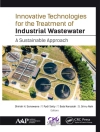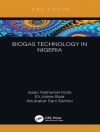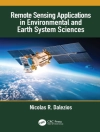The findings presented in this volume represent a concerted effort to develop a more inclusive form of reindeer management for northernmost Europe. Our guiding principle has been to foster a new paradigm of participatory research. We wish to move beyond the historical reliance on western approaches to basic and applied science. These have been concerned prim- ily with interactions between herded animals and the various components of their biophysical environment, e. g. , plants, insects, predators, climate, and others. In our view, sociocultural and economic drivers, along with herders’ experience-based knowledge, gain equal currency in the effort to understand how management may mitigate against the negative aspects of the challenges modern herding faces, while also exploring concepts of sustainability from different perspectives (see also Jernsletten and Klokov 2002; Kankaanpää et al. 2002; Ulvevadet and Klokov 2004). This broadening of the pool of disciplines and local, national, and int- national stakeholders in policy-relevant research invariably complicates v- tually all aspects of the research process. Multidisciplinary or, in our sense, transdisciplinary approaches also require extraordinary effort from all p- ticipants if they are to succeed. As such, those approaches should not be undertaken lightly, nor without personnel who possess appropriate expe- ence in cooperating with those of different disciplines and, preferably, also with relevant practitioners and public social and administrative institutions. In such settings the potential for misunderstandings is quite high.
Tabla de materias
Prologue.- Prologue.- Herders and Reindeer: The Cultural and Socio-Economic Dynamics of Human-Animal Relations.- The Challenges of Modernity for Reindeer Management in Northernmost Europe.- Dynamics in Human-Reindeer Relations: Reflections on Prehistoric, Historic and Contemporary Practices in Northernmost Europe.- Development of Participatory Institutions for Reindeer Management in Finland: A Diagnosis of Deliberation, Knowledge Integration and Sustainability.- The Comparison of Indigenous and Scientific Perceptions of Reindeer Management.- The Challenges and Dilemmas of Concession Reindeer Management in Sweden.- Changes in Property Regimes and Reindeer Herding Management in Post-Soviet Herding Collectives: The Case of the Municipality of Lovozero (Murmansk Region, Northwest Russia).- Reindeer Herding — Effects on Soils, Soil Biota and Vegetation.- Defining the Quality of Reindeer Pastures: The Perspectives of Sámi Reindeer Herders.- Very High Resolution Remote Sensing Data in Reindeer Pasture Inventory in Northern Fennoscandia.- Vegetation: Structure, Cover, and Biomass of Subarctic Tundra Wetlands Used as Summer Pastures.- The Chemical Response of Reindeer Summer Pasture Plants in a Subarctic Peatland to Ultraviolet (UV) Radiation.- Consequences of Grazing on Soil Physical and Mechanical Properties in Forest and Tundra Environments.- Changes in Organic Horizon Soil Properties Due to Reindeer Herding and Changing Management.- Changing Microbial Ecology with Changes in Grazing and its Management.- Hygienic Status of Soils and Surface Waters in Reindeer Herding Areas in Northernmost Europe.- Integrative Models for Reindeer Management: The Interface Between Social and Natural Sciences.- Population Trends of Semi-Domesticated Reindeer in Fennoscandia — Evaluation of Explanations.- Systems Analysis of Finnish Reindeer Management.- Synthesis: Environmental and Sociopolitical Conditions for Modern Reindeer Management in Europe’s North.- Epilogue.












